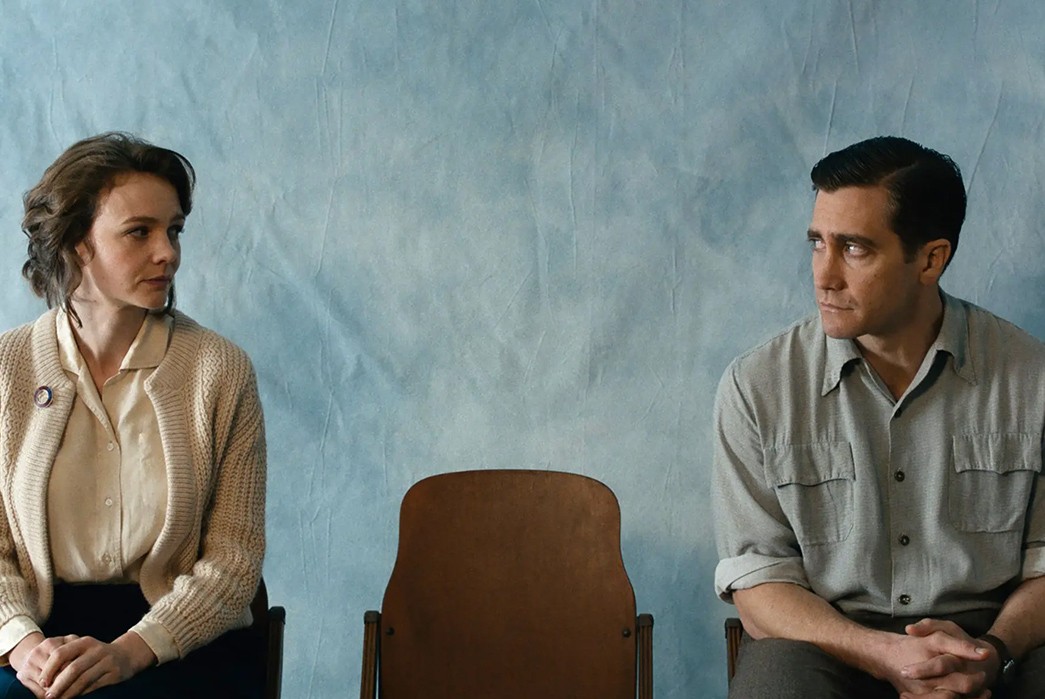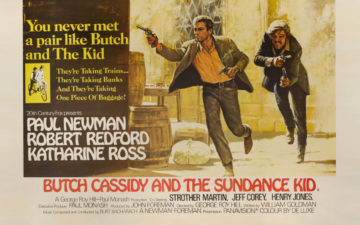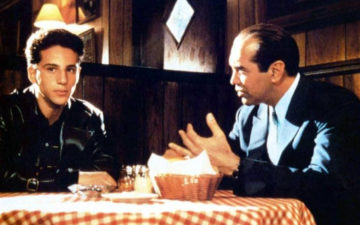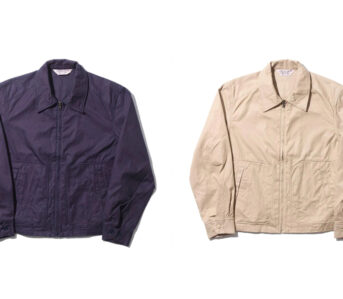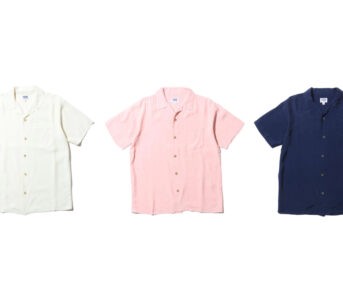Working Titles takes a closer look at specific films with a denim and workwear aesthetic with the goal of examining the material’s shifting cultural image.
Film enthusiasts often appreciate movies not only for their compelling narratives but also for their visual aesthetics. One such film that seamlessly intertwines an engaging storyline with captivating clothing and style is Wildlife. Directed by Paul Dano and released in 2018, Wildlife not only leaves a lasting impact with its thought-provoking themes but also immerses viewers in a visually stunning style that perfectly complements the film’s atmospheric setting.
Set in 1960s Montana, the land of big skies and brimmed hats, Wildlife tells the poignant story of the Brinson family’s disintegration. The costumes and style in the film serve as a visual representation of the characters’ emotional journeys, mirroring the unraveling relationships and the shifting dynamics within the family.
The film’s costume designer, Amanda Ford, deserves commendation – in my opinion – for her meticulous attention to detail in capturing the essence of the era. The characters’ wardrobes and even brand choices reflect the conservative yet evolving fashion trends of the time, emphasizing their individual personalities and their place in society.
Now, before we get onto what you all came here for, a quick disclaimer: finding stills from this movie was a real pain in the nether region. Every time I thought I had punched in a clever search term into Google to try and get the stills I wanted, I was confronted with a bunch of images of monkeys, tigers, giraffes, you name it. David Attenborough even cropped up on multiple occasions. So, thanks for naming your movie, Wildlife, Mr. Dano. But on a serious note, it’s worth watching if you want to truly experience some period-accurate post-war fashion.
Jerry Brinson
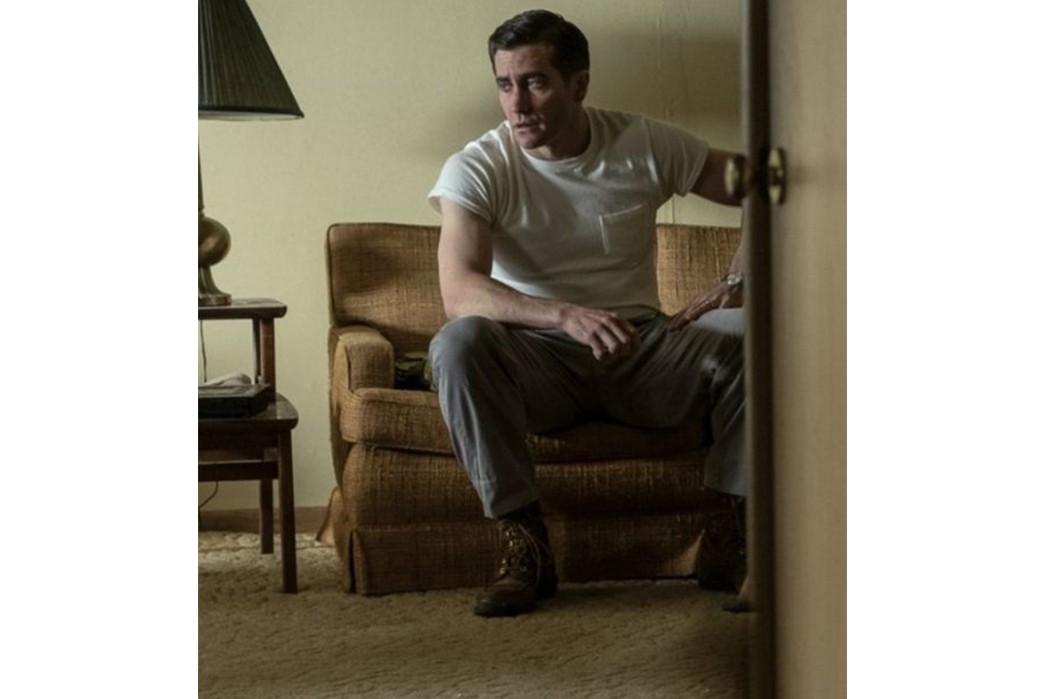
Via Pinterest
There are three things in life that utterly baffle me: one, pouring milk into the bowl before cereal, two, putting the toilet paper roll under instead of over, and three, how Jake Gyllenhaal hasn’t won an Oscar yet. In fact, he’s only received one nomination, and that was for Best Supporting Actor in 2006. Clearly, the Academy Awards Board missed Prisoners, but hey-ho.
Jerry Brinson – played by the heavily underrated Jake Gyllenhaal – is depicted as a traditional man with a conservative approach to dressing. He is often seen in button-down shirts, slacks, and a classic leather jacket, portraying a sense of stability and conformity. Towards the beginning of the movie, Jerry’s clothing choices closely reflect his role as the family’s sole provider and breadwinner; an archaic yet pretty standard ‘60s family structure stereotype. He desperately wants to provide, however, when changing circumstances make that more challenging, his stubbornness and ego get in the way, both of which go on to be the figurative death of him.
Onto some of the standout fits.
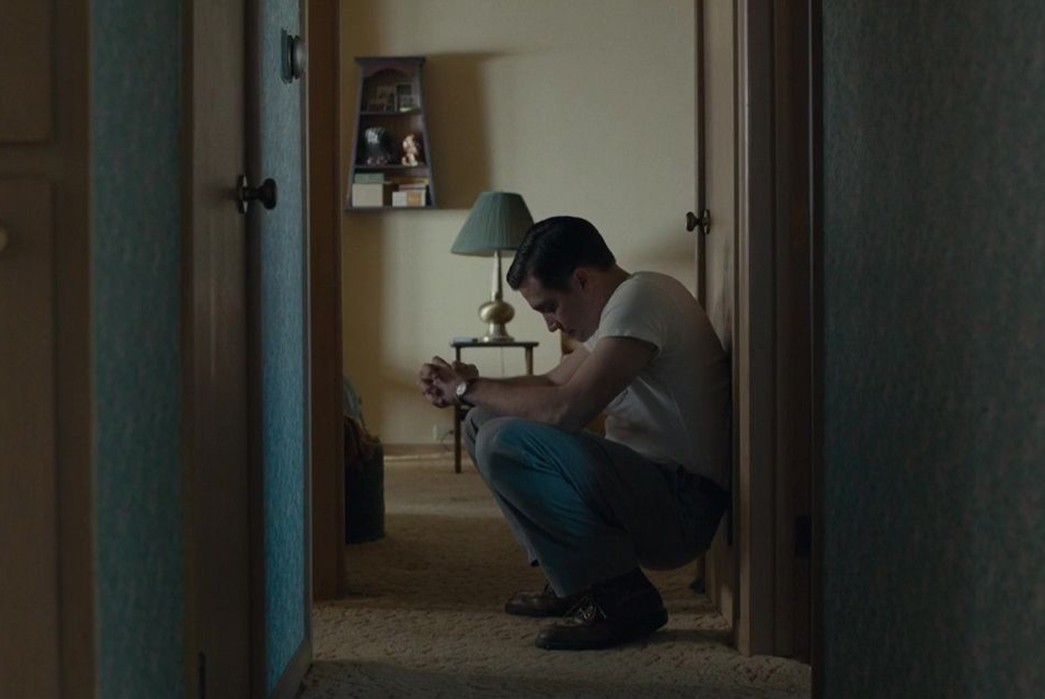
Via Pinterest
Jerry has a job as a golf caddy for the wealthy. That’s not a spoiler, don’t worry. But it is important in terms of how Jerry dresses. The ‘60s was an important era for golf fashion. Yes, golf fashion. In fact, the ‘50s and ‘60s, and the immediate post-war era in general, were pivotal moments in the fashion timeline, hence why a lot the Japanese heritage brands we know today, like Jelado, Pherrow’s, Warehouse and Cushman, to name a few, draw inspiration from that particular era. Just look at the Dean Jacket Jelado dropped this year, a piece inspired by the McGregor Drizzler Jackets that were a hit on the golf course back in the 50s.
A lot of it stems from nostalgia. The ‘50s and ‘60s are often romanticized as an era of post-war recovery, economic growth, and cultural transformation. They evoke a sense of nostalgia for a simpler time, and Japanese brands tap into this sentiment to appeal to consumers who appreciate vintage aesthetics and a longing for the past. If you think about it, the ‘50s and ‘60s were really the first time modern Western influence, and Western culture in general, hit Eastern shores. Western films, music, and fashion were embraced, and Japan underwent its own cultural renaissance during this time. Japanese brands may draw inspiration from this period to pay homage to the influence of Western culture on their own fashion industry. Craftsmanship, too. The fashion of the ‘50s and ‘60s often emphasized high-quality craftsmanship and attention to detail, two things that the Japanese brands of today hold near and dear.
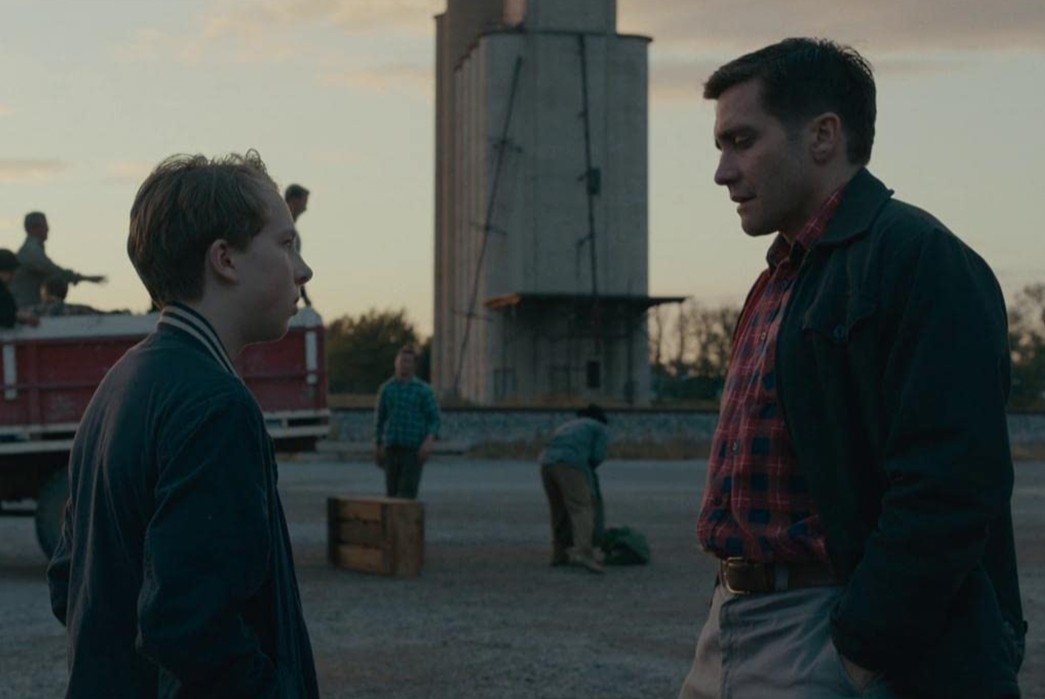
Anyways, back to the fits. Throughout the early stages of the movie, Jerry can often be seen in golf attire. It was in the ‘60s that fashion-conscious golfers started to incorporate more vibrant colors and patterns into their traditionally quite dreary palettes. Jerry is seen here wearing a checked shirt tucked into some beige chinos with a harrington-work-coach-bluson-jacket hybrid. This was a pretty standard look in the ‘60s, and, to be honest, it wouldn’t look out of place now. In fact, you could waltz to Clutch in London tomorrow and pick up an outfit just like this.
As things start to take a turn, Jerry loosens up a little bit. No, I’m not talking about his swing, I’m talking about garms.
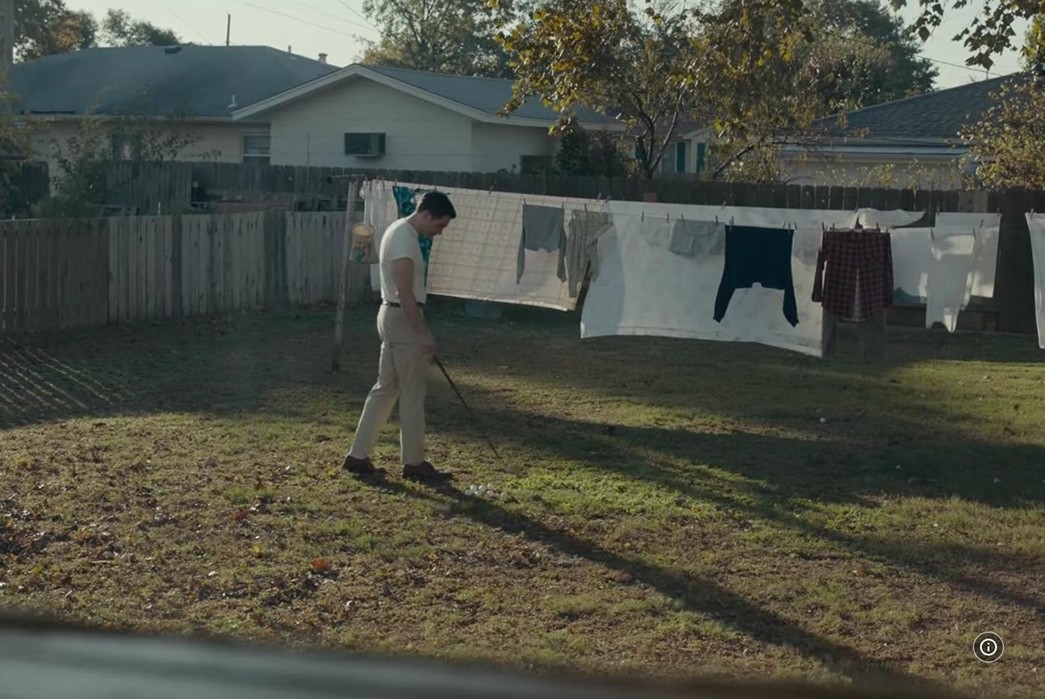
Jerry loses the jacket and swaps the shirt for a plain white tee. In all honesty, he might have just taken his jacket and shirt off and run with just the undershirt, but it’s very ivy-esque nonetheless. Notice the tuck on the tee, as well as the slightly cropped tapered chinos and ecru socks, all of which were all the rage among the Ivy Leaguers in the ‘60s. Again, it wouldn’t look remotely weird today, especially on a golf course.
It wouldn’t be Heddels if we didn’t get a little weird about a t-shirt, so let’s zoom in on one.
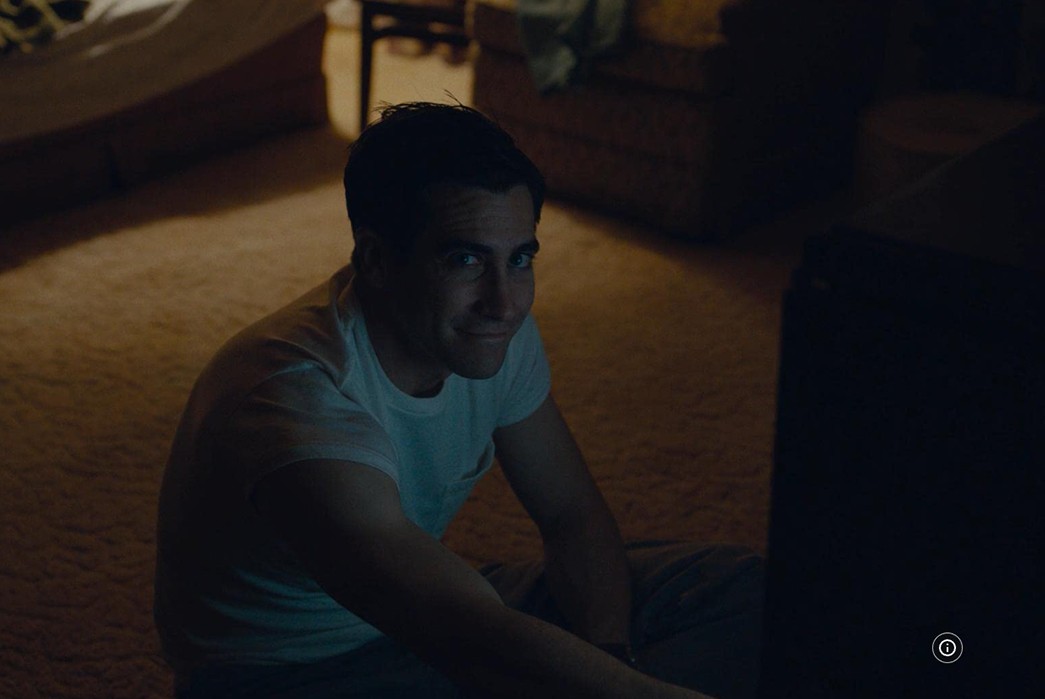
There are a couple of images of menswear icons that spring to mind here.
One is Marlon Brando in A Streetcar Named Desire and the other is James Dean being, well, James Dean.
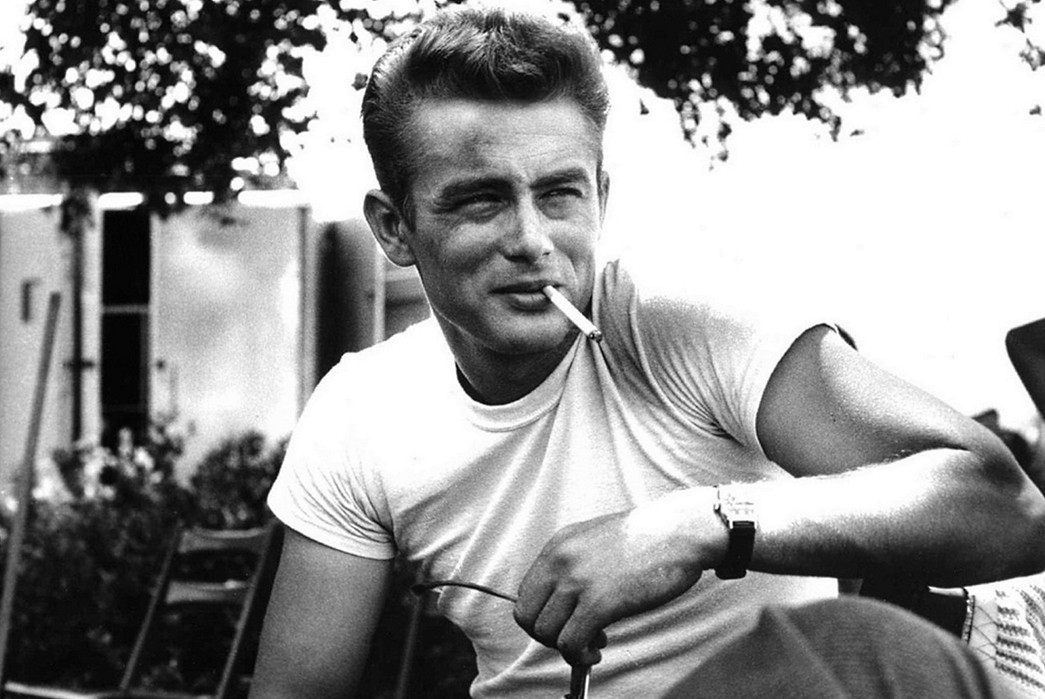
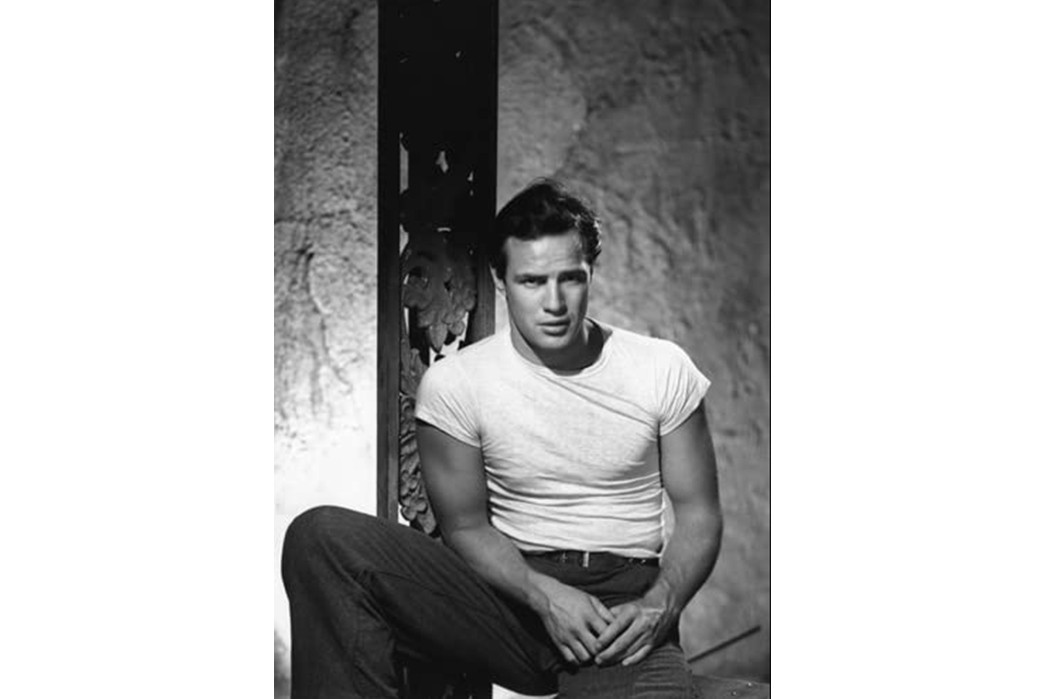
Notice the length of the sleeves. For whatever reason, short sleeves and armpit-digging, tight armholes were the way to go back then. They look cool, for sure, but they also had a very odd, yet practical function. Smoking was very mainstream back in the ‘50s and ‘60s. In fact, it was more weird if you didn’t partake in the habit. Well, during WWII, soldiers that weren’t on the front line needed to keep their cigarettes handy but didn’t want to crush the pack. So, they stuck them in the sleeves of their undershirts during warmer weather.
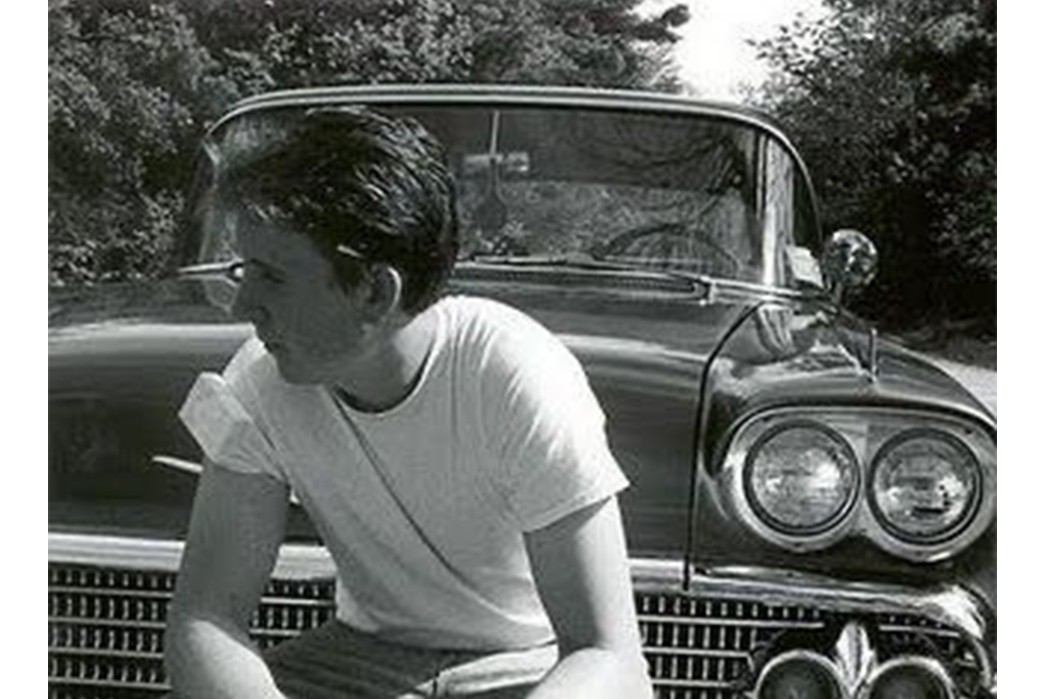
This practice translated to the post-war era, particularly among young people. It was seen as a way to appear cool and rebellious, and was often depicted in popular media such as movies and television shows. The trend eventually declined in popularity, and is now less commonly seen. And while Jerry doesn’t have a cigarette packet stuffed up his sleeve, all I can see is that it looks ripe for one. Levi’s does a stellar job at reproducing some of these vintage-style tees in its Levi’s Vintage Clothing line.
Jerry maintains this look for most of the movie. Eventually, he swaps the golfing derbies out for a pair of moccasin boots, very reminiscent of what Yuketen and Rancourt are producing nowadays. He even chucks on a ¾ length sweatshirt at one point; an unconventional sleeve length that I’m a huge fan of. We’ve all seen the iconic picture of Steve McQueen in The Great Escape, another movie worth watching if you’re into heritage style. I give Jerry a 10/10, mainly because his clothing choices remind me of my own.
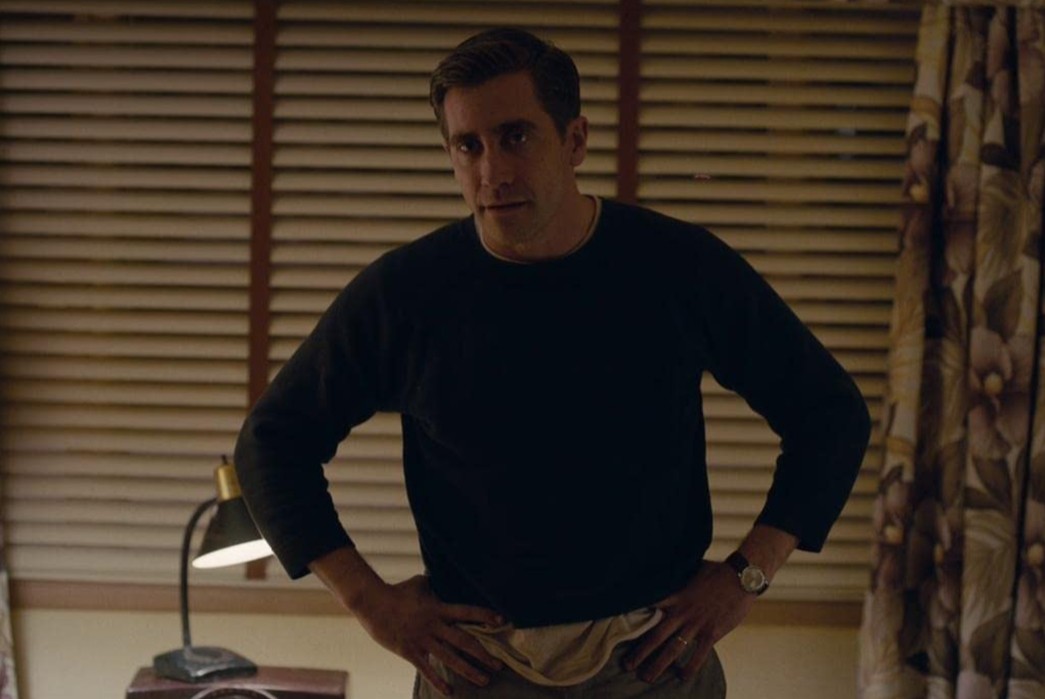
via IMDb
Jeanette Brinson
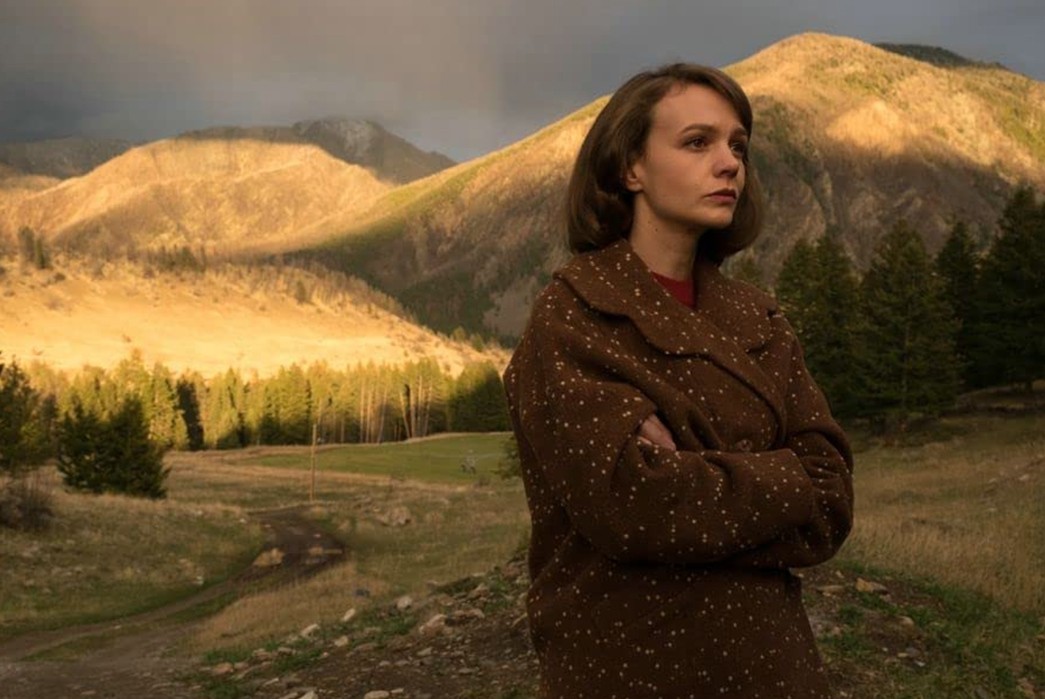
via IMDb
Carey Mulligan plays Jeanette, the central female character who undergoes a transformation that is subtly reflected in her clothing choices. Initially seen wearing modest and practical outfits befitting a traditional 60s wife and mother, Jeanette gradually starts embracing bolder, more stylish garments as she asserts her independence and explores her identity beyond traditional gender roles. Her shift from modest dresses to more form-fitting outfits mirrors her growing confidence and desire for freedom.
I won’t lie to you, I’m not in a position to start talking about women’s fashion beyond the above. However, to not mention Jeanette, specifically Carey Mulligan’s portrayal of the character, would have been sacrilege. From the outset, Jeanette, like Jerry, has beautiful intentions. Unfortunately, those intentions darken as the familial fibers, once tightly knit, start to yield to the relentless force of irreconcilable circumstances. My feelings towards Carey can only be described as erratic. You know those patient monitors you get in hospitals? With lines that look like mountain ranges. Peaks and troughs, people. I like her, but then I don’t. She has every intention of doing what’s right but falls victim to her own delusions. I can and can’t blame her. It’s sad to watch.
Either way, Carey has her moments in the fashion department.
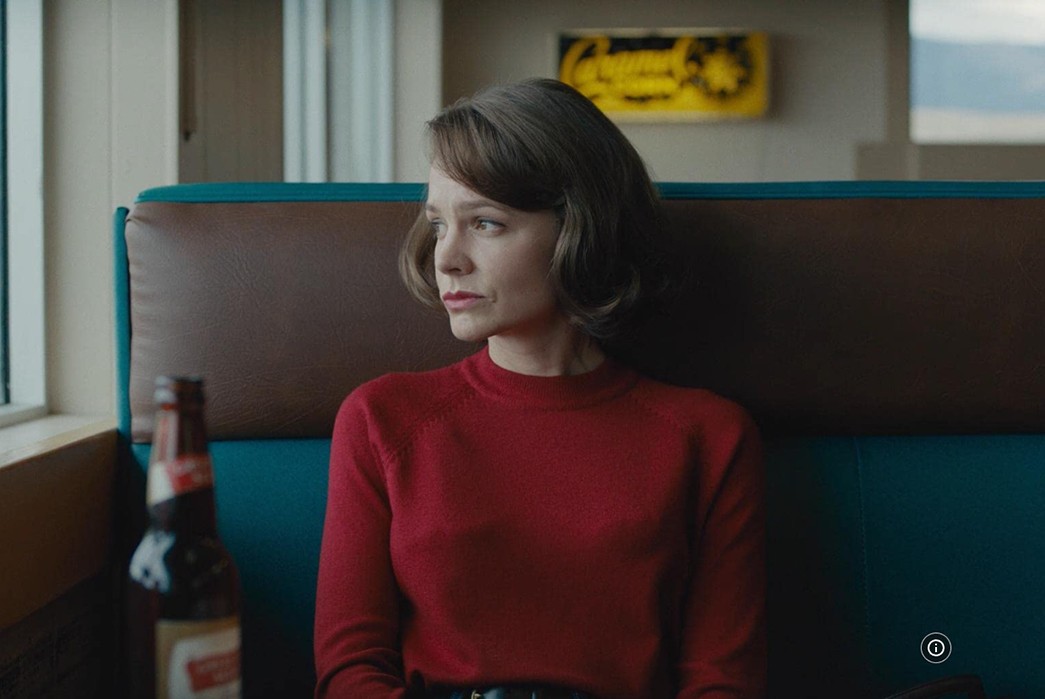
via IMDb
Joe Brinson
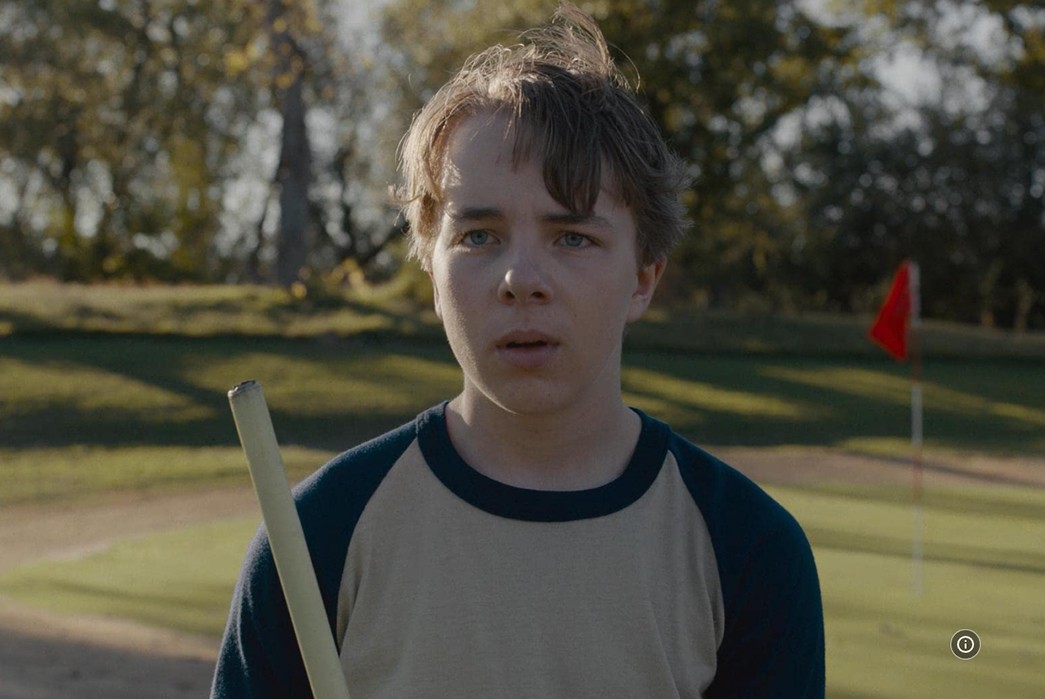
via IMDb
The pièce de résistance, Heddel. Joe has fits for days.
As the couple’s teenage son, Joe’s style remains influenced by his parents. He is often seen wearing shirts and trousers, capturing the innocence and youthfulness of his character. Joe’s wardrobe undergoes subtle changes as he becomes more aware of the complexities of his parents’ relationship, reflecting his growing maturity and understanding.
It’s worth noting that in the 1960s, a major cultural shift occurred, particularly among the youth, challenging traditional norms and embracing new ideas. The counterculture movement, which advocated for social and political change, greatly influenced fashion during this time. The youth of the era sought to express their individuality and reject the conservative styles of the past. While Joe doesn’t necessarily epitomize the spirit of rebellion and nonconformity, his clothes kinda do.
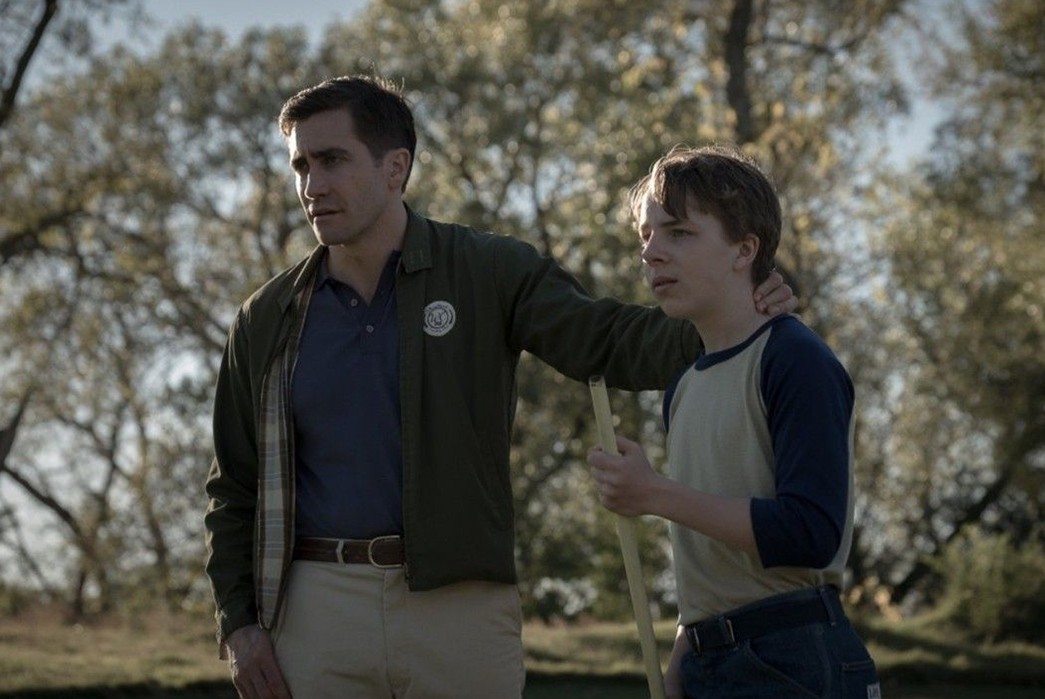
via IMDb
Joe’s style is pretty typical of the youth back in the ‘50s and ‘60s. Lots of sportswear and, thankfully, a shit tonne of denim. Here you can see Joe rocking a ¾ length raglan baseball tee with a pair of Lee carpenter jeans. This is something I’d rock today, for sure. Warehouse has some awesome baseball tees like the one Joe is wearing, and, well, you know where to find Lee jeans.
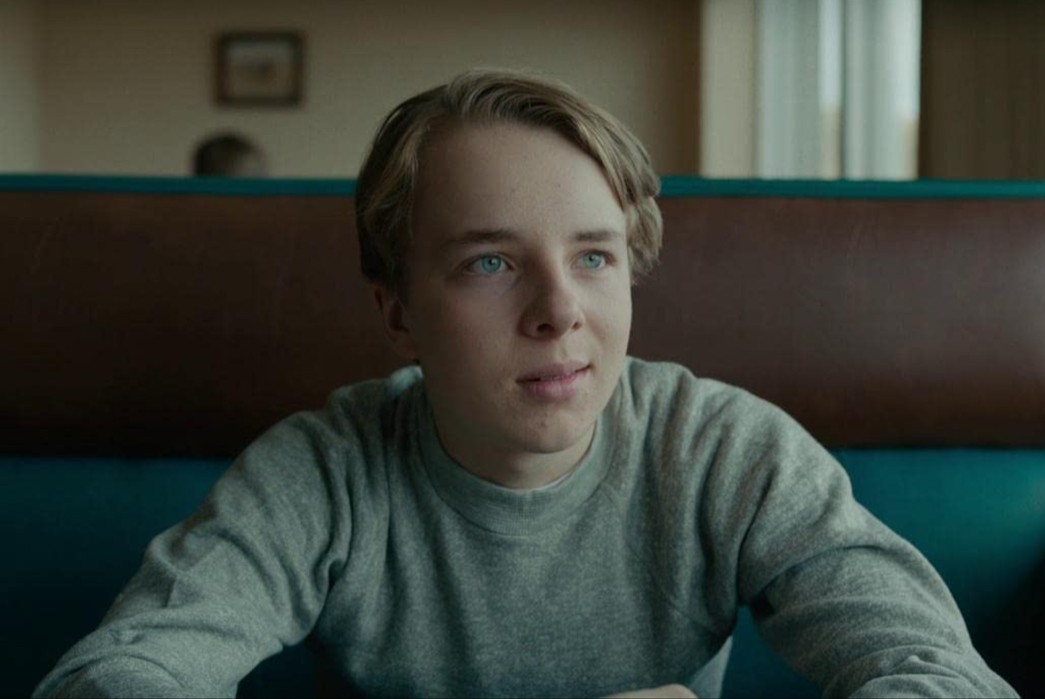
via IMDb
The grey sweatshirt. The most versatile piece a man can own, bar the white tee – I will die on this hill. This particular sweatshirt features raglan sleeves, a pretty thick collar (pretty mock-necky in all honesty), and no V-insert, which is very odd. The V-insert – or V-patch – became a popular design and functional element in the era that this movie was set in, hence why I called it odd. Not a deal-breaker though. Jackman makes a sweatshirt pretty similar to this one, as does Save Khaki, two of my absolute faves.
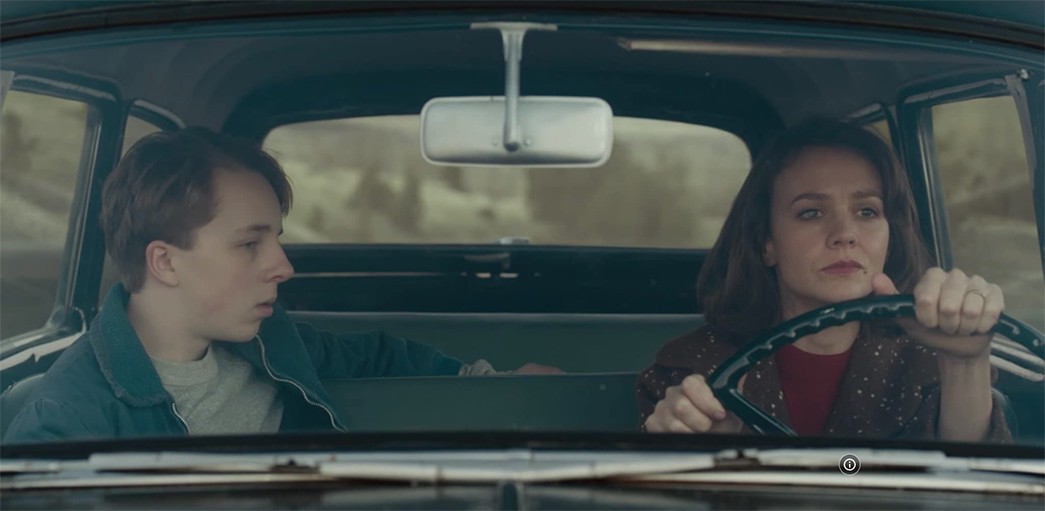
via IMDb
Here Joe can be seen with the same sweatshirt with a jacket layered on top. It wouldn’t surprise me if this jacket was Save Khaki’s Easy Jacket, you know. Cord collar, fleece-lined, zip-front. If you need a jacket for Spring/Summer, a cotton twill or drill jacket in a neutral colorway is the way to go. So easy to throw on over whatever you’re wearing.
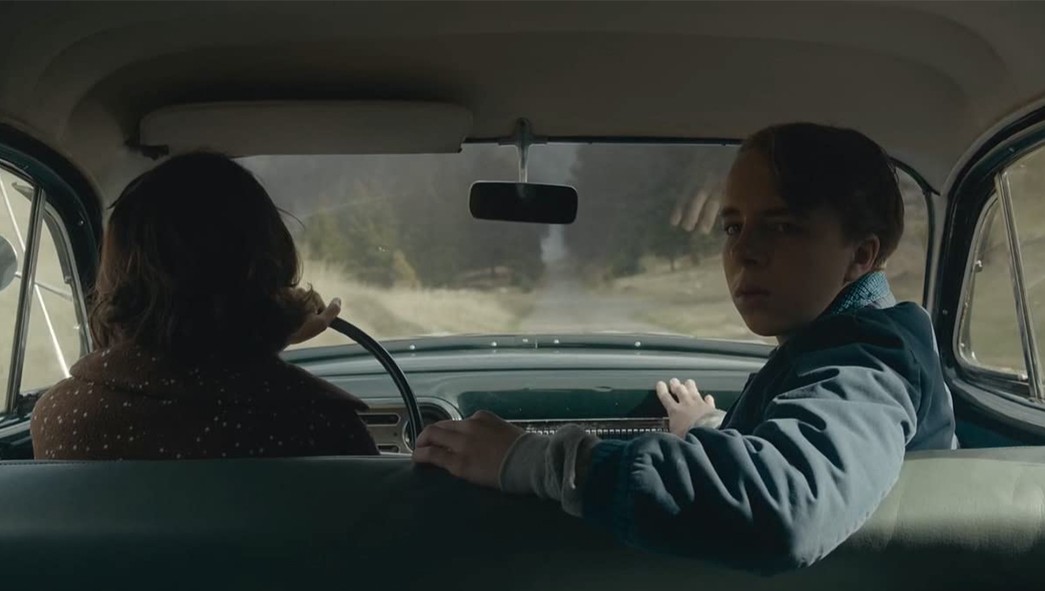
via IMDb
If Heddels was a movie character it would be Joe in this particular scene.
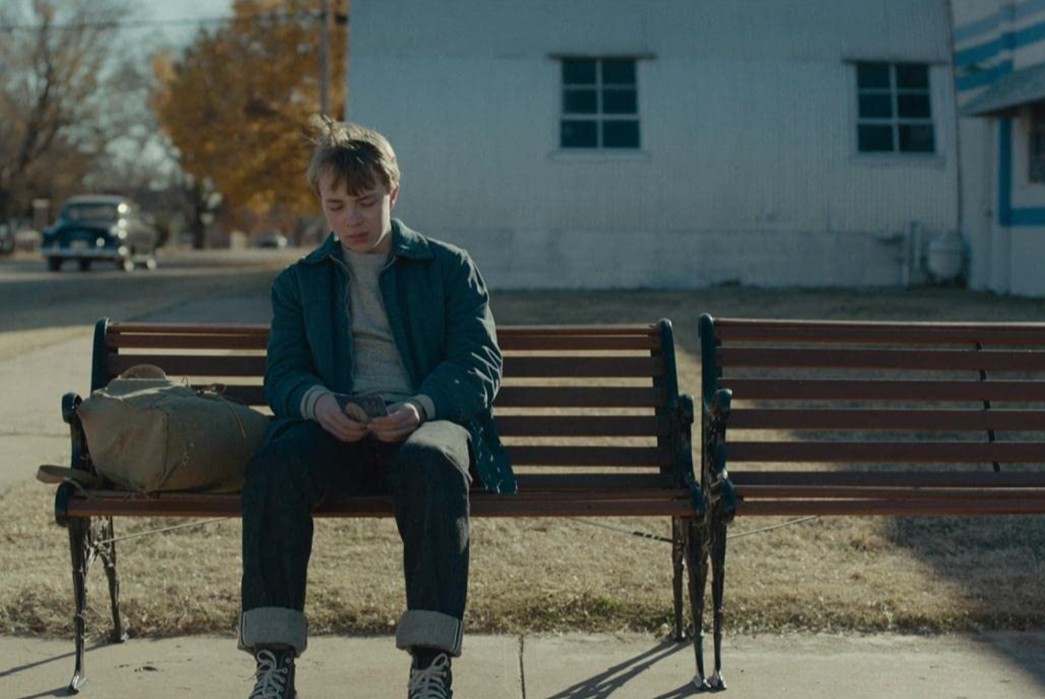
via IMDb
Same jacket and sweatshirt paired with a pair of selvedge denim and some chucks. He even threw in the canvas, Filson-esque backpack to match. Joe’s rocking some pretty heavy cuffs, clearly to show off the ID (I’m joking), which I’m a fan of.
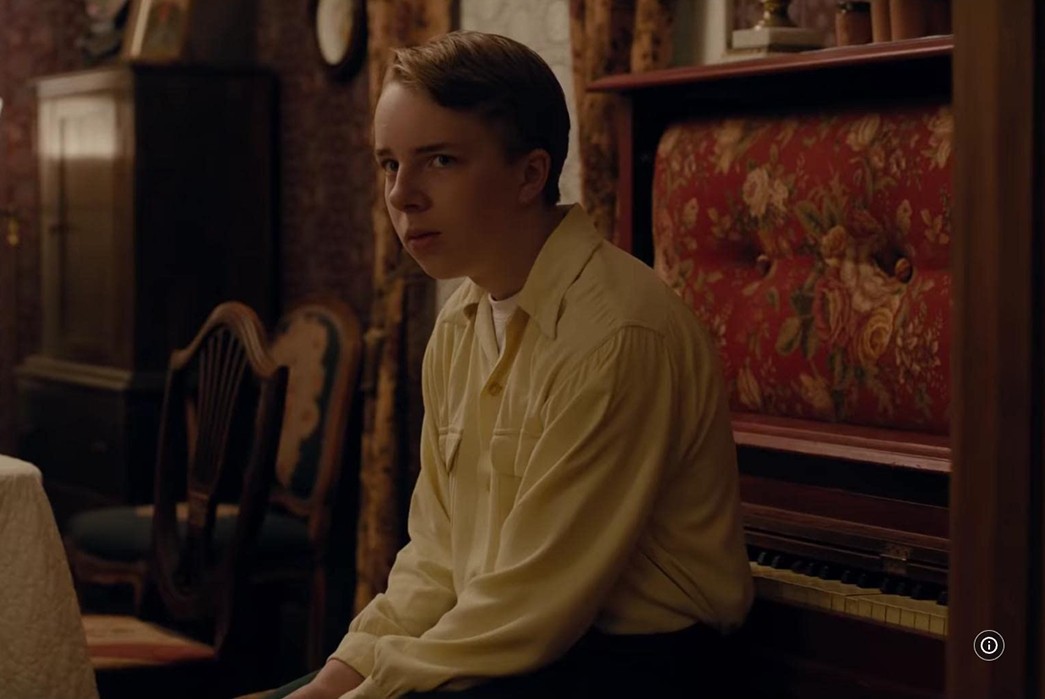
via IMDb
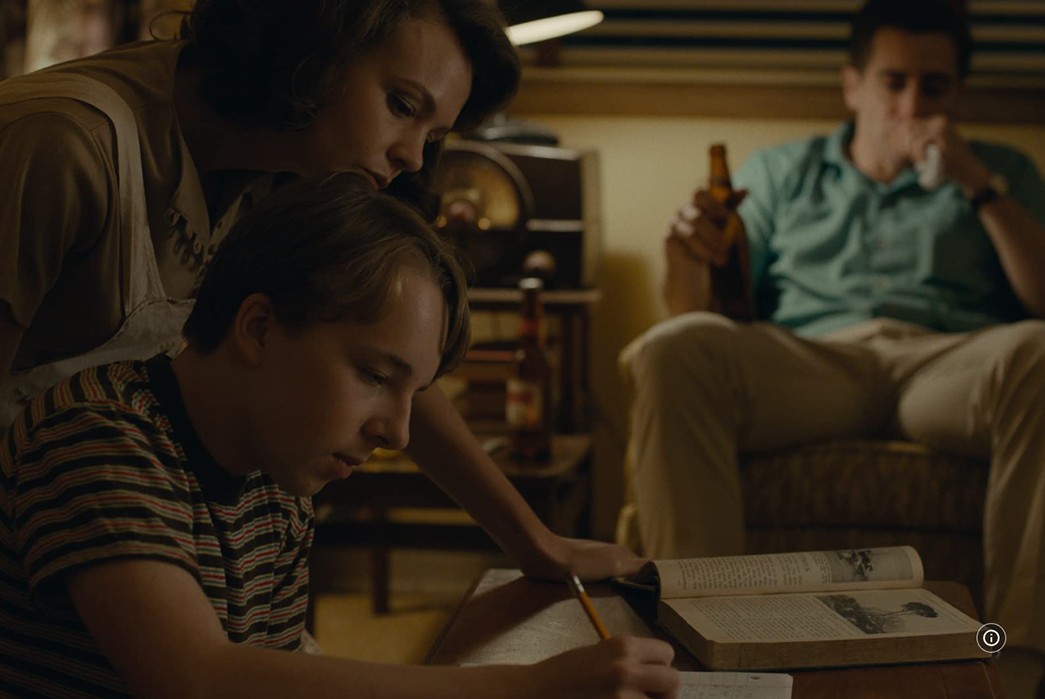
via IMDb
Honestly, I love Joe. I truly believed Ed Oxenbould’s captivating performance. I just felt so bad for him the entire way through. Joe’s unfaltering hope that everything is going to work out fine is utterly heartbreaking. He tries to say and do all the right things, only to fall victim to circumstances that are completely out of his control.
Cinematography
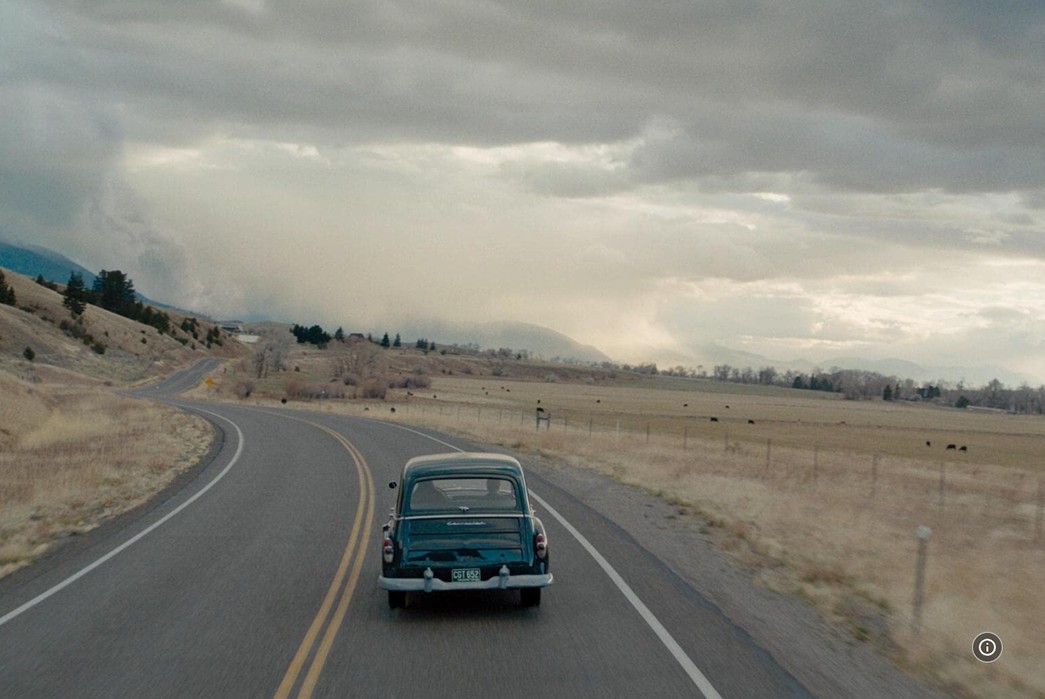
via IMDb
It’s not a character, and it’s not fashion-related, but I just want to quickly touch on the cinematography. There’s this concept known as ‘vicarious nostalgia’. It’s essentially the phenomenon of feeling nostalgia for places one has never been or visited. It refers to the emotional longing or wistfulness experienced for locations that exist in the realm of imagination, cultural representation, or personal connections.
I felt an overwhelming sense of vicarious nostalgia when watching this movie. Places and culture, despite sometimes never being experienced, can have a profound impact on our emotions and sense of identity, transcending physical boundaries and personal experiences. It speaks to the universal human longing for connection, adventure, and a sense of belonging, even in the realm of the imagined or the unexplored.
What I’m trying to say is, if you don’t watch this movie for the fashion, watch it for the cinematography. Welcome to small-town America, baby.
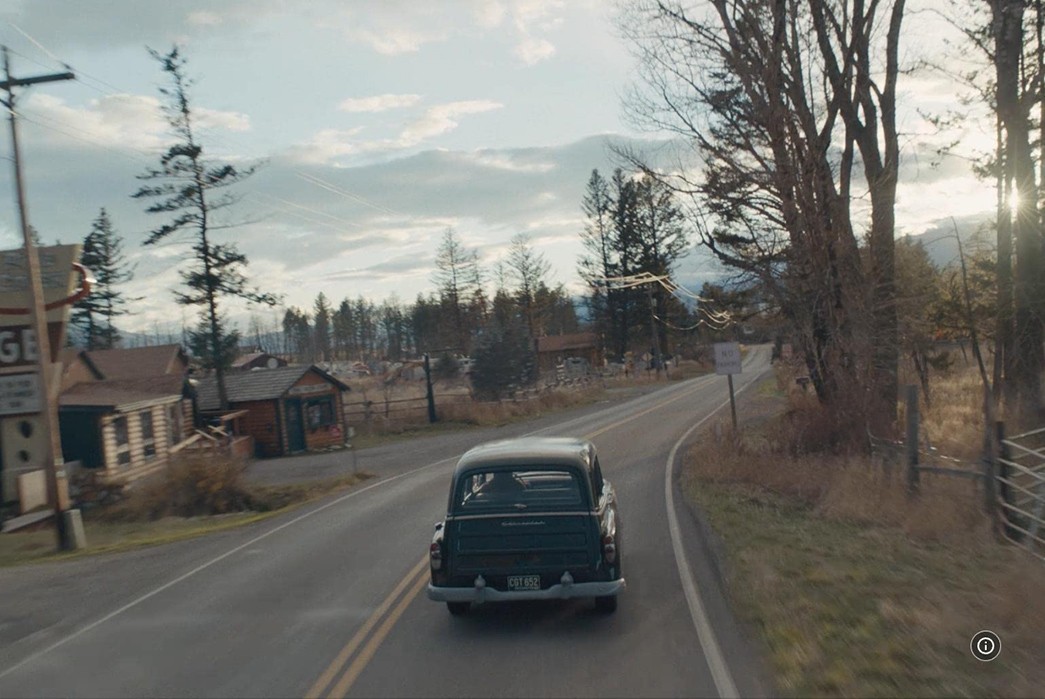
via IMDb
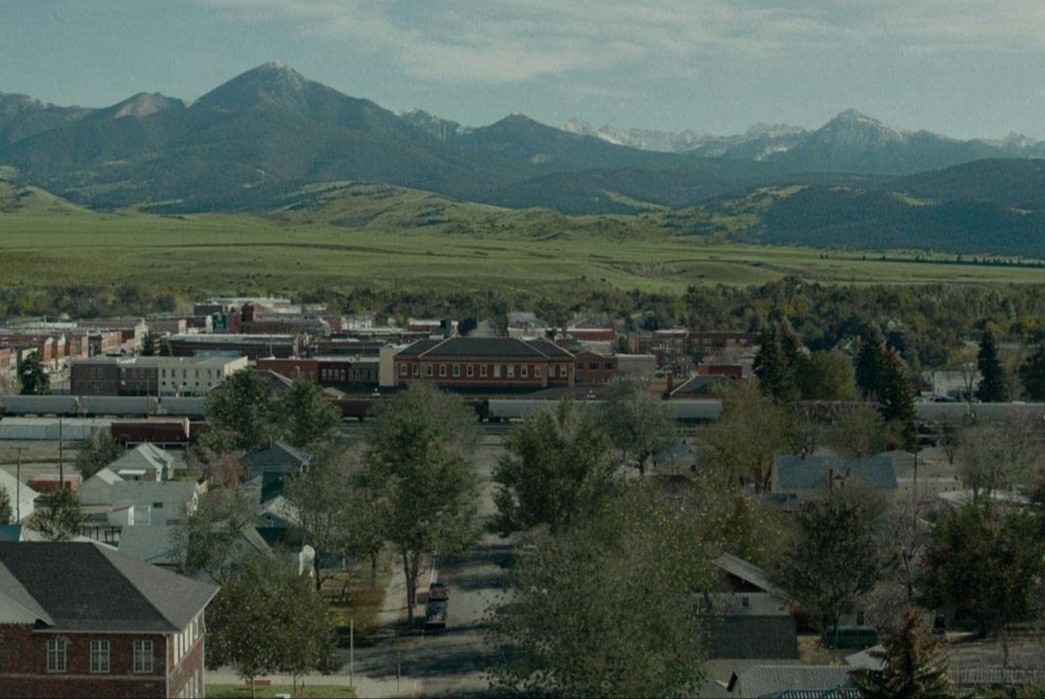
via IMDb
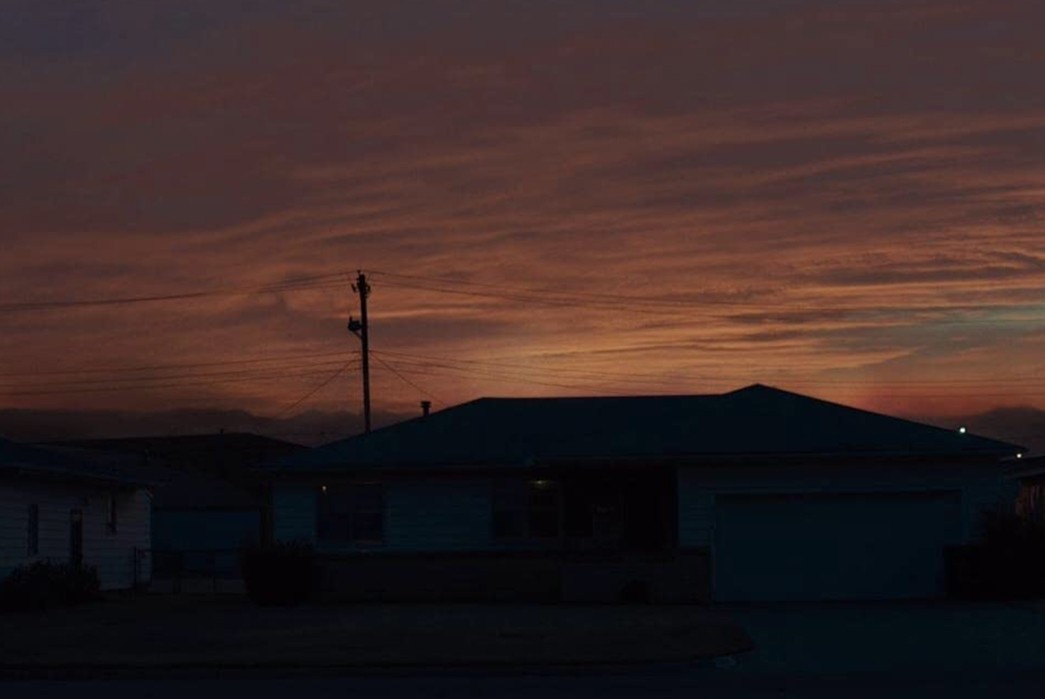
via IMDb
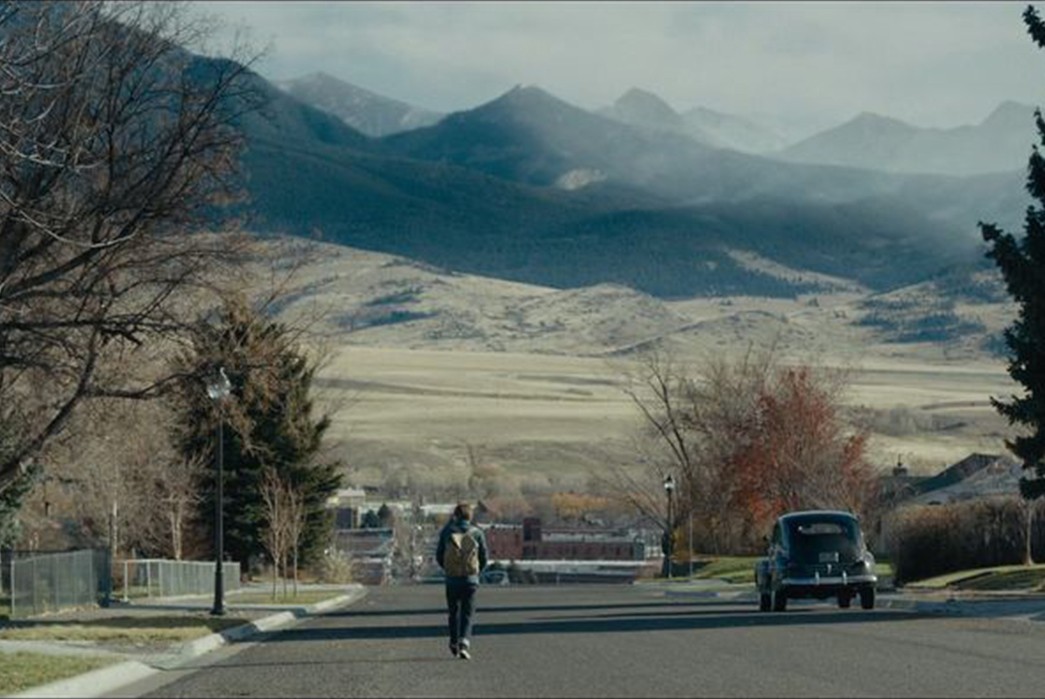
via IMDb
In “Wildlife,” the clothing and style not only serve as visual elements but also play a crucial role in conveying the emotional depth of the characters. The carefully curated wardrobe reflects the transformation and evolution of each character, capturing the essence of the 1960s while highlighting their individual journeys. The costumes in “Wildlife” become an integral part of the storytelling, visually immersing the audience in the era and enhancing the overall cinematic experience. Through its meticulous attention to fashion and style, “Wildlife” stands out as a mesmerizing visual tapestry that enriches the narrative and captivates viewers with its sartorial splendor.
Get the Wildlife look
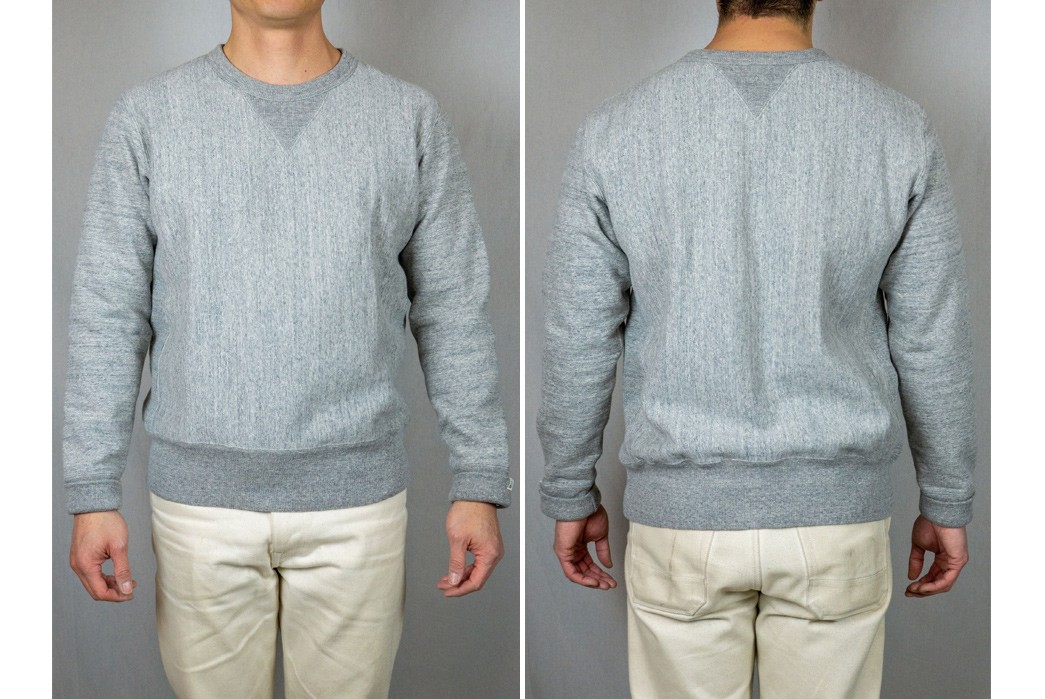
UES’ Puca Pucara Loopwheel Sweatshirt in grey, $185 from Franklin & Poe
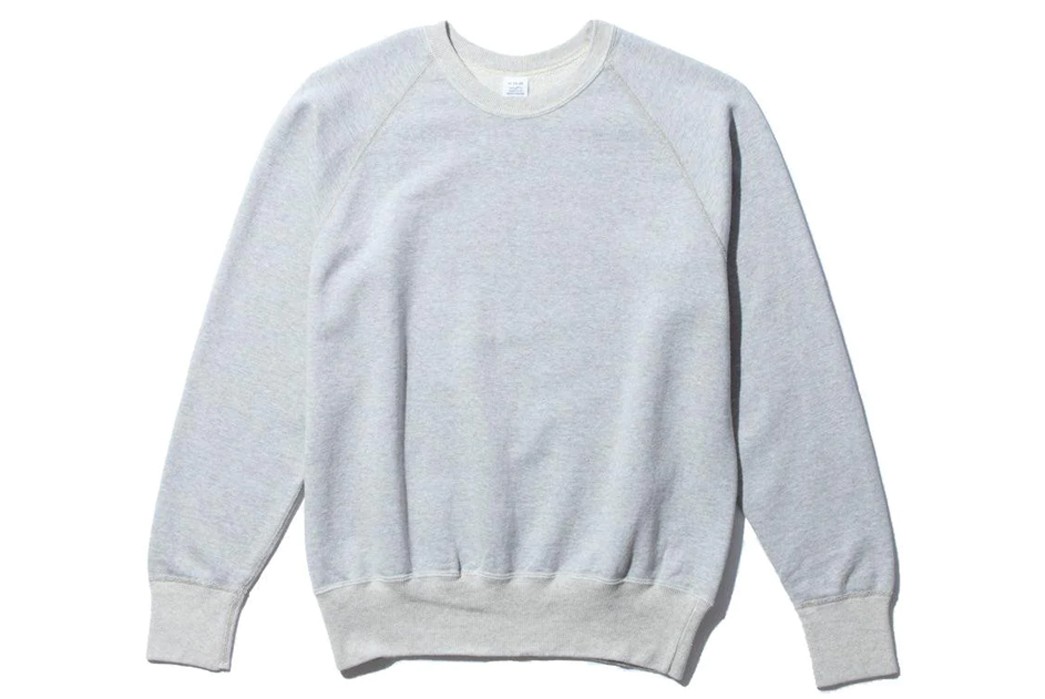
Warehouse & Co’s Lot. 461 Crew Neck Sweatshirt in grey, $155 from Clutch Cafe
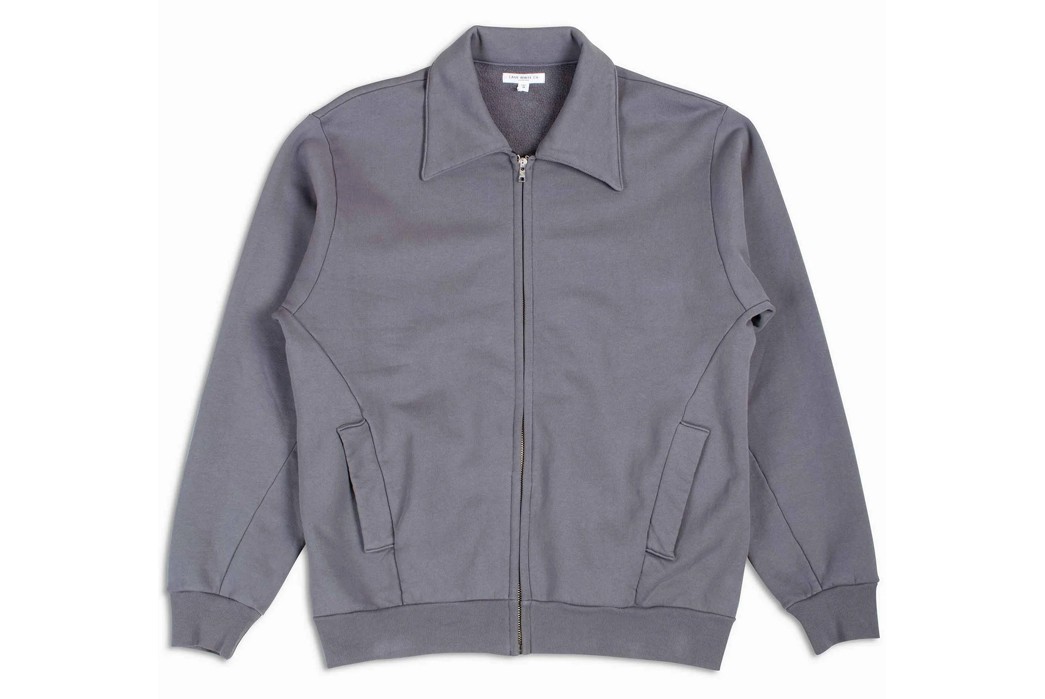
Lady White Co. Zip Sweat Jacket in Orchid, $263 from Lost & Found
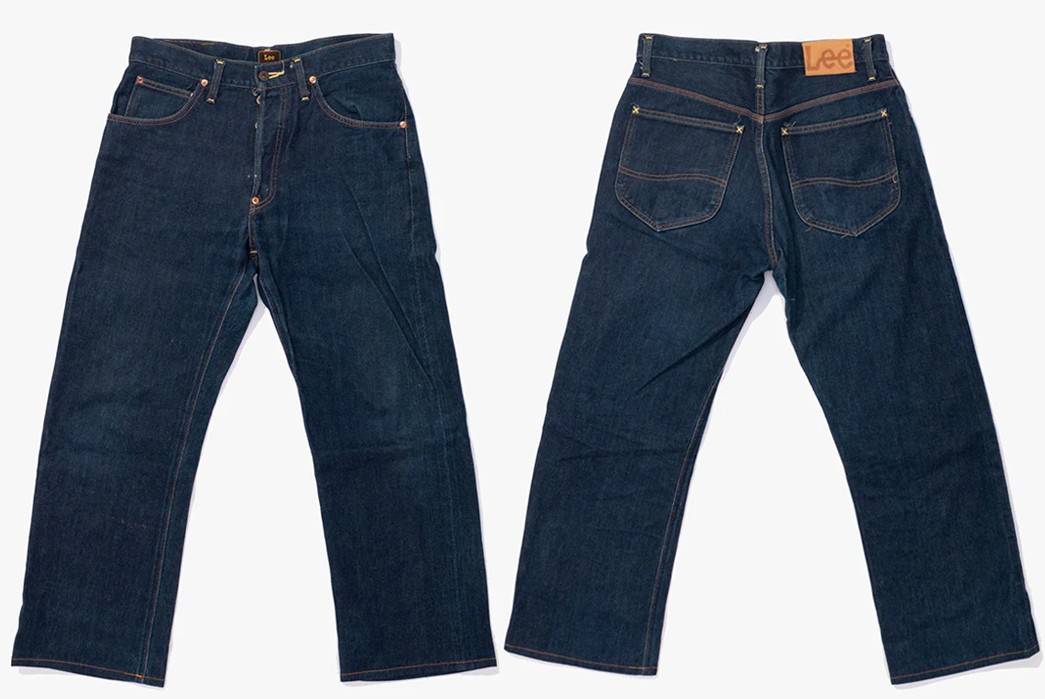
Japanese Repro Denim Jeans, Lee Brand, $202 from Kiriko
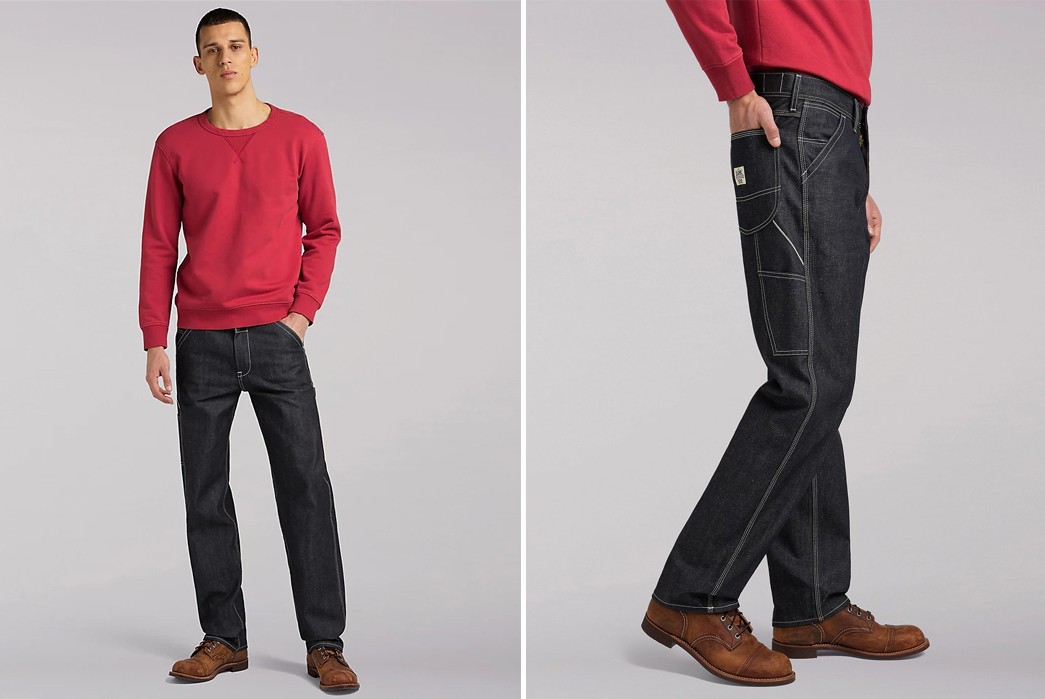
Lee 101 Relaxed Fit Carpenter Jean, $200 from Lee
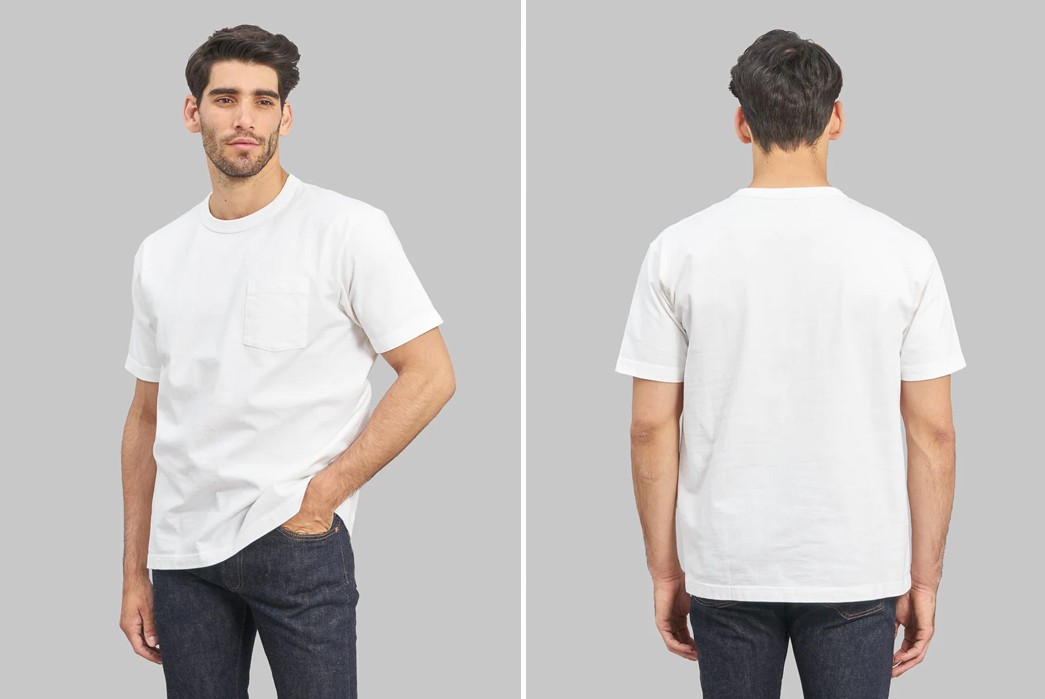
Whitesville Heavyweight Pocket T-shirt in white from, $73 from Redcast Heritage
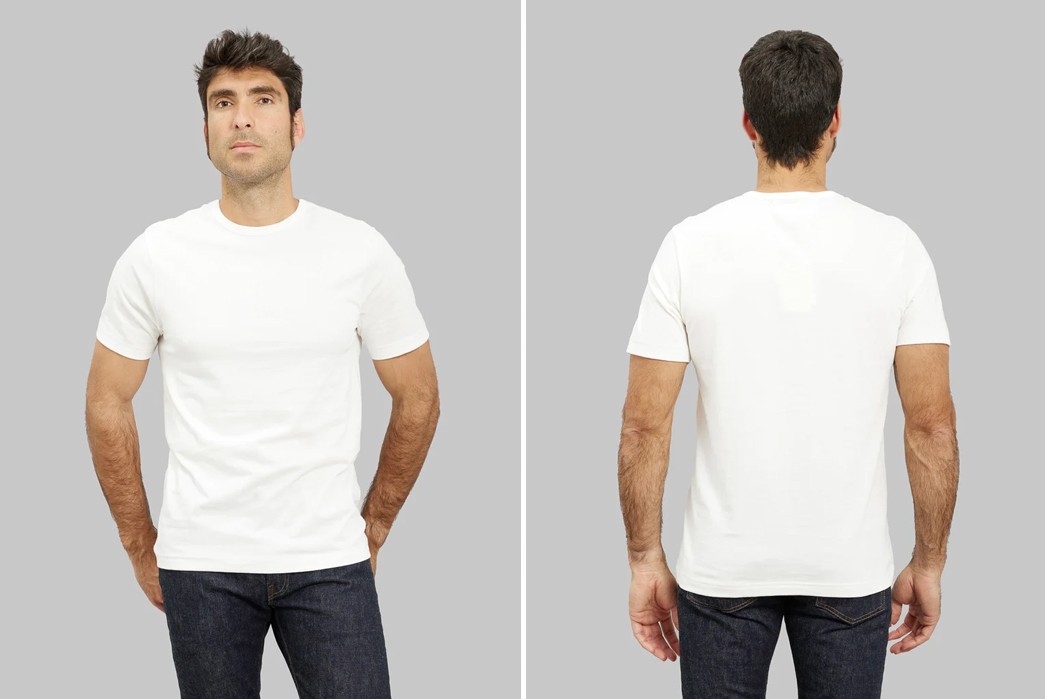
Merz b. Schwanen 1950s 5.5oz Loopwheeled Classic Fit T-shirt in white, $53 from Redcast Heritage
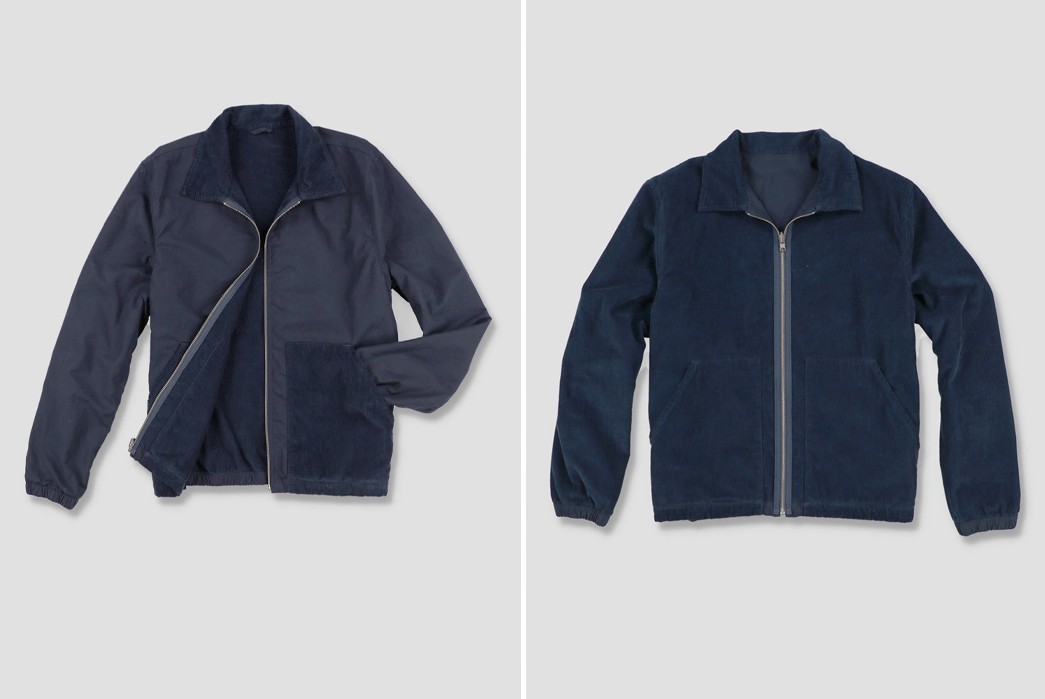
Save Khaki Easy Jacket, available for $250 from Save Khaki
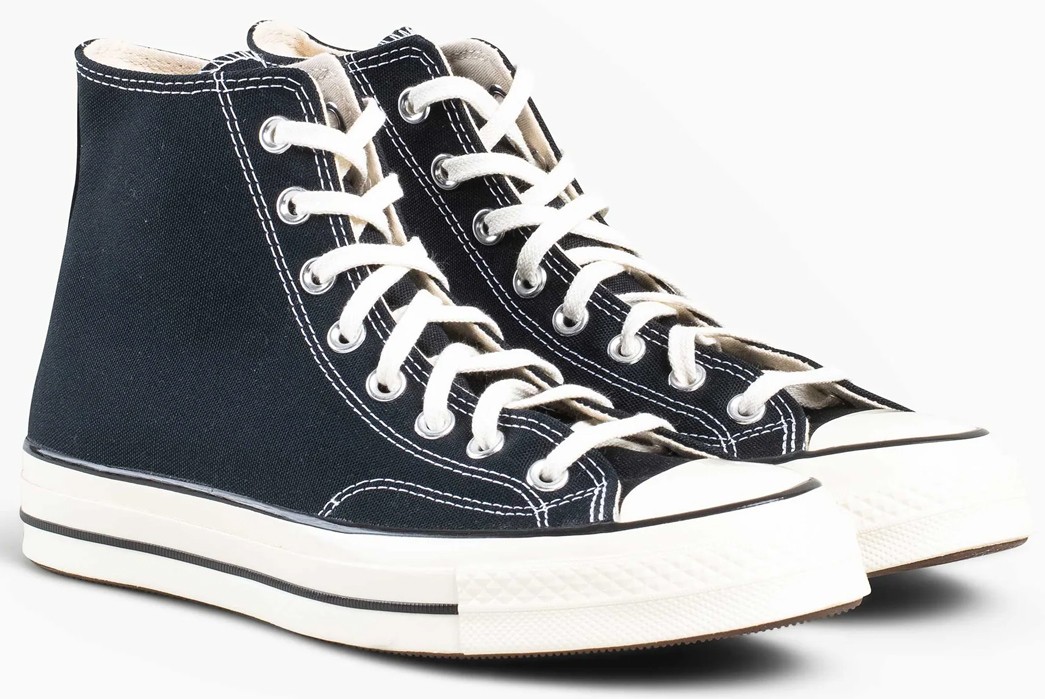
Converse CT 1970s Hi 162050C in black, $76 from Lost & Found
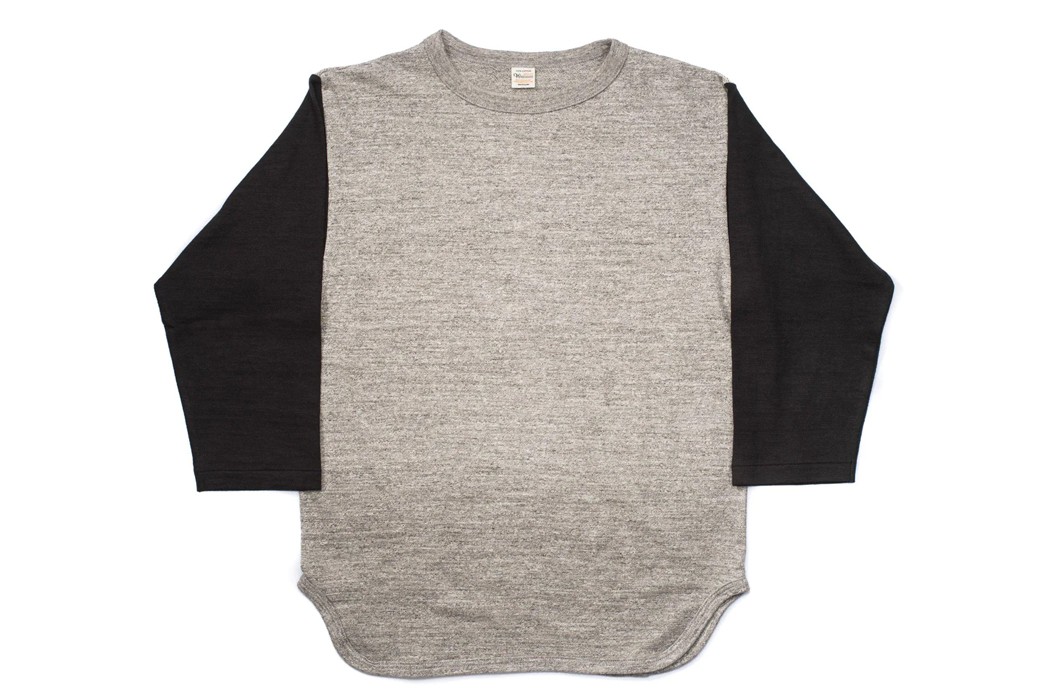
Warehouse & Co. Lot. 4800 Baseball tee, $99 from Clutch Cafe
